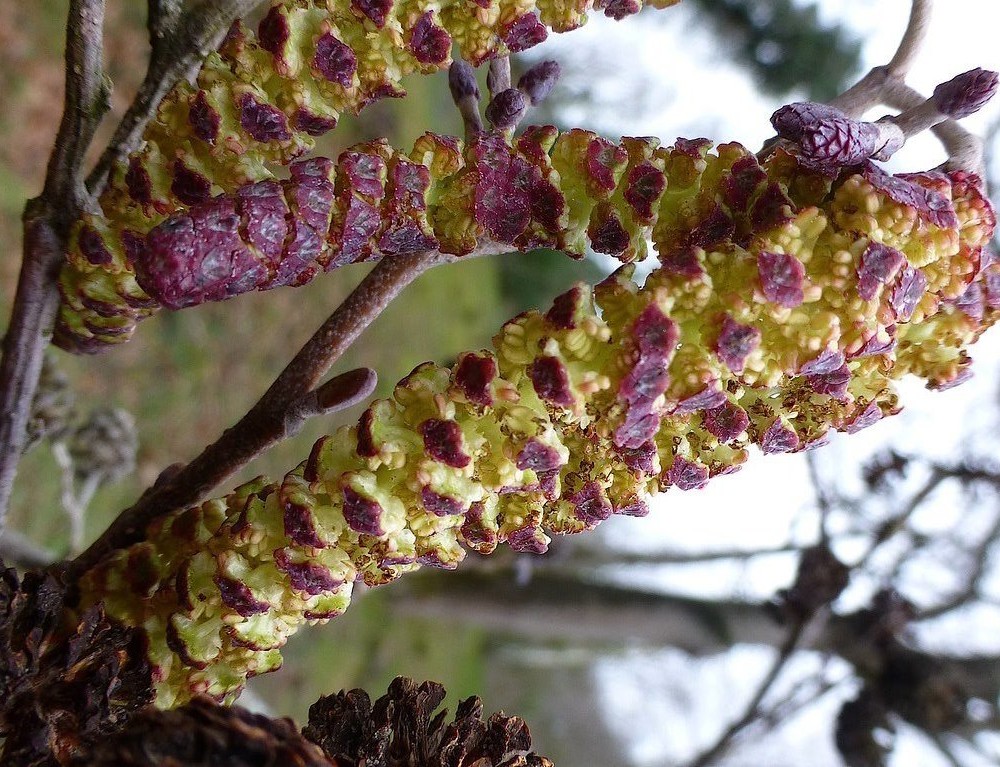Alnus trabeculosa
(Alnus trabeculosa)

Description
Alders are trees comprising the genus Alnus in the birch family Betulaceae. The genus comprises about 35 species of monoecious trees and shrubs, a few reaching a large size, distributed throughout the north temperate zone with a few species extending into Central America, as well as the northern and southern Andes. With a few exceptions, alders are deciduous, and the leaves are alternate, simple, and serrated. The flowers are catkins with elongate male catkins on the same plant as shorter female catkins, often before leaves appear; they are mainly wind-pollinated, but also visited by bees to a small extent. These trees differ from the birches (Betula, another genus in the family) in that the female catkins are woody and do not disintegrate at maturity, opening to release the seeds in a similar manner to many conifer cones. Alders are commonly found near streams, rivers, and wetlands. Sometimes where the prevalence of alders is particularly prominent these are called alder carrs. In the Pacific Northwest of North America, the white alder (Alnus rhombifolia) unlike other northwest alders, has an affinity for warm, dry climates, where it grows along watercourses, such as along the lower Columbia River east of the Cascades and the Snake River, including Hells Canyon. A. glutinosa and A. viridis are classed as environmental weeds in New Zealand. Alder leaves and especially the roots are important to the ecosystem because they enrich the soil with nitrogen and other nutrients. Alder bark contains the anti-inflammatory salicin, which is metabolized into salicylic acid in the body. Some Native American cultures use red alder bark (Alnus rubra) to treat poison oak, insect bites, and skin irritations. Blackfeet Indians have traditionally used an infusion made from the bark of red alder to treat lymphatic disorders and tuberculosis. Recent clinical studies have verified that red alder contains betulin and lupeol, compounds shown to be effective against a variety of tumors. Electric guitars, most notably those manufactured by the Fender Musical Instruments Corporation, have been built with alder bodies since the 1950s. Alder is appreciated for its tone that is claimed to be tight and evenly balanced, especially when compared to mahogany, and has been adopted by many electric guitar manufacturers.
Taxonomic tree:







